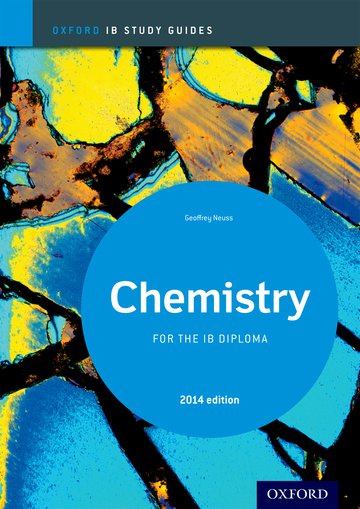Taxol - a chiral auxiliary case study
 D.7 Taxol - a chiral auxiliary case study (2 hours)
D.7 Taxol - a chiral auxiliary case study (2 hours)
Pause for thought
Paclitaxel, (which has the trade name of Taxol) is an incredibly complex molecule with no fewer than eleven chiral centres. It is possible to get side-tracked into some very complicated chemistry when teaching this topic so it helps to keep clear in your mind exactly what this topic is covering. The following checklist may help.
1. Natural source of taxol
Taxol is an effective chemotherapeutic agent that occurs naturally, mainly in the Pacific yew tree, but only in very small amounts. Even if this tree is grown commercially it cannot produce all the taxol required for therapeutic use.
2. Structure of taxol
A molecule of taxol contains 11 chiral centres.
3. Chemotherapeutic properties of taxol
It is effective against several different types of cancer (e.g. ovarian, breast, lung and pancreatic cancers). It works by interfering with tumour cell division by binding to certain proteins called tubulins.
4. Semi-synthesis of taxol
It can be semi-synthesised from Baccatin III, a precursor of taxol which is also found in yew trees.
.png)
Baccatin III
To obtain the correct stereochemical configuration in the side chains of taxol, use of chiral auxiliaries is made.
5. Chiral auxiliaries
A chiral auxiliary is a specific enantiomer of a reagent, which can be attached to the starting material to create the stereochemical conditions necessary for only the desired enantiomeric product to be formed. After the product has been formed the chiral auxiliary is removed and recycled.
.jpg)
trans-2-phenylcyclohexan-1-ol - a chiral auxiliary used in the synthesis of taxol
6. Test for purity using a polarimeter
A pure enantiomer will rotate the plane of plane-polarized light either clockwise or anti-clockwise by a fixed number of degrees. By using a polarimeter and measuring the angle of rotation the percentage purity of the desired enantiomer in the product can be determined.
Nature of Science
The demand for certain drugs is greater than the supply of natural substances required to synthesize them. However, due to advances in technology, many natural substances can now be produced in laboratories in large enough amounts to meet the demand.
Learning outcomesAfter studying this topic students should be able to: Understand:
Apply their knowledge to:
| Clarification notesThe structure of Taxol (paclitaxel) is given in Section 37 of the data booklet. International-mindednessThe availability and distribution of certain medicines and drugs around the world is unequal. |
Teaching tipsWhat is important when teaching this topic is to try to emphasise the principles underlying it without getting too involved in the complex chemistry of taxol. It might be worth asking students to do their own research on the history of taxol and why it is such an important chemotherapy drug and how it functions in the body against cancerous cells. Stress both the environmental and economic problems of relying on one particular natural resource and why the synthesis of taxol is such a difficult task. Use taxol to reinforce the concept of optical isomerism and ensure your students can identify chiral carbon atoms within a molecule using skeletal structures as well as full 3-D structures. The use of molecular modelling kits is extremely useful here. They should also be able identify the important functional groups in taxol and its precursor. Explain how chiral auxiliaries work and stress that without them the amount of desired product is much lower as racemic mixtures will be formed. It is then very difficult to separate the desired enantiomer from the mixture resulting in very low yields. It is probably worth using, or repeating, the thalidomide example here to explain why the medication given must contain the therapeutic enantiomer and not others that may cause harm. They will already have come across a polarimeter to distinguish between the two enantiomeric forms of an optically active compound in sub-topic 20.3 : stereoisomerism. This case study goes slightly further as a calibration graph can be made of known composition against the degree of rotation of plane-polarised light. Once the degree of rotation of the final product is measured the percentage purity can be obtained by interpolation. | Study guide
Page 162 QuestionsFor ten 'quiz' questions (for quick testing of knowledge and understanding with the answers explained) see MC test: Taxol - a chiral auxiliary case study. For short-answer questions see Taxol questions together with the worked answers on a separate page Taxol answers. Vocabulary listTaxol |
Teaching slides
Teachers may wish to share these slides with students for learning or for reviewing key concepts.
Other resources
1. A life science video from ScienceOnline showing that Taxol can also be obtained from Canada yew as well as Pacific yew.
2. Although students are not required to know in detail how Taxol works as a chemotherapeutic agent in the body it is probably good that they do have some idea. One way in which Taxol is delivered is a by binding it to albumin nanoparticles. The following video by the European Fellowship for Pharmacists explains clearly how Taxol works when bound to albumin.
![]() Mechanism of action of taxol (paclitaxel)
Mechanism of action of taxol (paclitaxel)
3. A video your students might like by Richard Thornley on how chiral auxiliaries only give the desired enantiomer. It was actually made for the old programme but is still relevant to this sub-topic.
4. A simple but effective demonstration of the principle of polarimetry.

 IB Docs (2) Team
IB Docs (2) Team 



















